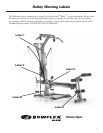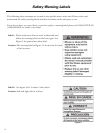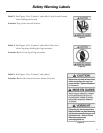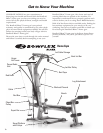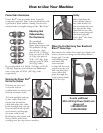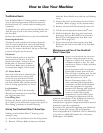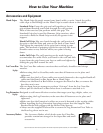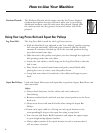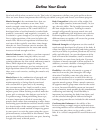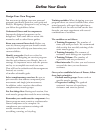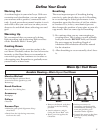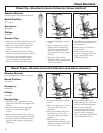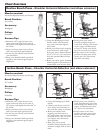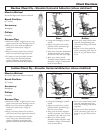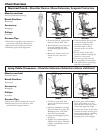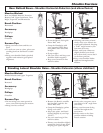
15
Your body will do what you train it to do. That’s why it’s important to define your goals and focus them.
Here are some fitness components that will help you define your goals and choose your fitness program.
Muscle Strength is the maximum force that you
can exert against resistance at one time. Your
muscle strength comes into play when you pick up
a heavy bag of groceries or lift a small child. It is
developed when a localized muscle is worked both
positively (concentric) and negatively (eccentric) at
a resistance—great enough so you can perform only
five to eight repetitions of the exercise before the
muscle fails. Each set of repetitions is followed by a
rest interval that typically runs three times longer
than the set. Later, between exercise sessions, the
muscle overcompensates for the stress and usually
increases in both strength and size.
Muscle Endurance is the ability to perform repeated
contractions. It comes into play when you cross-
country ski or work on your feet all day. Endurance
training addresses the slow twitch, endurance muscle
fibers, which depend on oxygen for energy. To
develop muscle endurance, use low resistance and
high repetitions about 15-20 repetitions in each set,
three sets to each exercise, working the muscle only
to fatigue.
Muscle Power is the combination of strength and
speed of the muscular contraction. This is often
misinterpreted as a) being directly associated
with certain skill or sport and/or b) meaning
that you must move fast. Load is actually a more
important factor than speed when attempting to
improve power. When training to achieve muscular
power, pick a resistance that fatigues you in the 3-
5 repetition range. When performing these reps,
it is more important to think of contracting the
muscles faster rather than attempting to move faster.
Performing sport simulation exercises usually results
in a deterioration of the motor pattern or skill. The
biomechanically sound method of improving power
in your sport is to train for power using the correct
joint movements, as described in this manual. Then
practice the skill associated with your sport, learning
to apply this newly achieved power.
Body Composition is the ratio of fat weight (fat)
to lean weight (muscles, bones and tissue). As you
age, the ratio shifts. The fat weight increases and
the lean weight decreases. Training for muscle
strength will generally increase muscle size and
aerobic conditioning will help burn extra calories.
Performing these two forms of exercise, either at
different times or together, will create the greatest
changes in body fat weight.
Balanced Strength and alignment are the result of
equal strength developed in all parts of the body. It
comes into play in your standing and sitting posture,
and in your ability to perform just about any activity
safely and effectively. An over-development of the
back will round the shoulders; weak or stretched
abdominals can cause lower back pain. You want
a balance of muscle strength in front and back. In
addition, you need a balance of strength between
your middle, lower, and upper body.
Flexibility is the ability of a muscle or group of
muscles to move the joint through a full range
of motion. Flexibility comes into play when you
execute an overhand serve or stretch for the top
shelf in the kitchen. It is a cooperative movement of
opposite muscle groups. When a muscle contracts,
its opposite muscle group must relax for the action
to occur. Increased flexibility means an increased
range of motion, made possibly by this simultaneous
contracting and relaxing. Good flexibility is
important in protecting the body from injury and
can be achieved through the balanced strength
training programs that are included in this manual.
Cardiovascular Endurance is the ability of the
heart and lungs to supply oxygen and nutrients to
exercising muscles over an extended period of time.
It comes into play when you jog a mile or ride a
bike. It is a critical component of overall fitness and
health.
Define Your Goals



